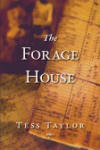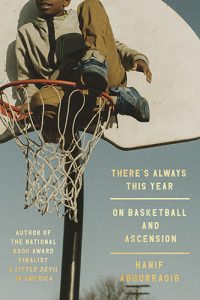The Forage House
“[S]he could see her story going on, her people there in the past—a way of imagining that grounds her,” writes Tess Taylor in her debut full-length poetry collection The Forage House (“Meeting Karen White, Descendent of Jefferson’s Gardener Wormley”). While these words describe someone other than the collection’s primary speaker, they prove an apt summary of Taylor’s first book: in The Forage House, we witness a personal discovery of family history and how it colors the speaker’s present. Throughout the collection, Taylor’s first-person speaker finds herself immersed in the vivid reality of her family’s past, a past that spans a period from Thomas Jefferson to a Confederate soldier who survived Gettysburg to her parents’ early years of marriage living in a Brooklyn commune. The Forage House presents the simultaneous distance and unshakeable presence of history through poems that bridge research and imagination, the distant past and the lived present.
“[S]he could see her story going on, her people there in the past—a way of imagining that grounds her,” writes Tess Taylor in her debut full-length poetry collection The Forage House (“Meeting Karen White, Descendent of Jefferson’s Gardener Wormley”). While these words describe someone other than the collection’s primary speaker, they prove an apt summary of Taylor’s first book: in The Forage House, we witness a personal discovery of family history and how it colors the speaker’s present. Throughout the collection, Taylor’s first-person speaker finds herself immersed in the vivid reality of her family’s past, a past that spans a period from Thomas Jefferson to a Confederate soldier who survived Gettysburg to her parents’ early years of marriage living in a Brooklyn commune. The Forage House presents the simultaneous distance and unshakeable presence of history through poems that bridge research and imagination, the distant past and the lived present.
Taylor’s most notable ancestor—Thomas Jefferson—acts as the volume’s lynchpin. Two poems in, we’re with Taylor’s speaker as she inspects an archaeological dig in a field a half mile from Monticello. “Inheritors of absences, we peer / into the five-by-five foot ledge,” she notes, juxtaposing the bare reality of archaeology with lyrical description of what history makes of us (“Eighteenth Century Remains”). For the speaker, the things left out of her family’s history haunt her most, Jefferson’s slave children forcing her to reconstruct her theories. “Erasures are deliberate and accidental. Erasures are deliberate,” she writes, showing us the process of readjusting her thought based on what her research brings to light (“Meeting Karen White, Descendent of Jefferson’s Gardener Wormley”). In a long poem, “A Letter to Jefferson from Monticello,” Taylor’s speaker addresses Jefferson directly as “O hypocrite,” but by the poem’s end, he becomes “ambitious foundering father I revere & hate & see myself in.” Taylor doesn’t simply settle for either hate or reverence but chooses instead to show us both options, arguing that both have a place in our understanding of history.
Accuracy plays a key role in Taylor’s ability to see both good and bad. In The Forage House, accuracy takes the form of details, whether as a meticulous recording of objects or the use of historical documents, including family papers and oral histories. In “Museum of the Confederacy,” Taylor notes “tatters delicate as widows’ laces,” “Lee’s tarnished bowls,” and “the Davis boy’s toy musket,” but then juxtaposes them against the present reality of “the state hospital . . . / smelling like sour cafeteria pizza, sweat,” and the presence of smokers and freeways. Historical documents take the form of family papers or eyewitness accounts from living relatives, and Taylor uses these resources to astonishing effect. In “Oral History 1963,” for instance, Taylor recounts a violently suppressed march in Danville, North Carolina during the Civil Rights era and her grandfather’s attempt to stand up to the judge who sentenced the demonstrators to fines and labor. The poem summarizes a newspaper article on the demonstration and quotes her grandfather’s letter to the judge, conveying the horror of the situation and imbuing the grandfather with a sense of heroism. But at the poem’s end, Taylor admits that he “backpedaled,” and the poem concludes with the judge’s words: “Mr. Taylor, you should have considered your wife & children.” Taylor uses arrangement to her advantage, piecing together the scraps of experience to create a memorable whole.
Although Taylor weaves together scenes from the past with conviction, she also doesn’t argue for one authoritative version of events. In The Forage House’s final poem, Taylor’s speaker envisions her mother, in the past, moving from research in a library in India to elopement with the man who will become Taylor’s father. As in the poems throughout the collection, rich details fill this imagining: “a Maharaja’s crooked portrait” and “moldering civil servants’ maps, tobacco tariffs” give way to a landscape where “cows paw garbage fires at dusk,” and “prayers rise like minarets” (“Bombay Archive 1975”). However compelling these details, as the poem concludes the speaker’s mother gets the last word: “And, No, my mother says, you haven’t listened. / No, it wasn’t like that really—” For all the depth of research evident in this collection, Taylor boldly admits—and embraces—her potentially flawed position as a poet. She invites us to not only inhabit the past with her, but also to examine the impossibility of ever really knowing it completely. Because of Taylor’s candor, The Forage House succeeds as both historical record and a well-written poetry collection, a memorable combination that invites us to inhabit Taylor’s vision of the past.





